With the advent of open floor plans in homes and offices and the growing shift to hybrid and electric vehicles, there is a growing need for quieter, more efficient motor controls. Even very small acoustic differences can have a significant effect on audible noise.
The graph below shows how appliances in a living space affect the overall noise level. Use advanced real-time control technologies such as motor control circuits with higher power density, higher integration and more efficient systems to help you achieve superior system acoustic performance. Some other strategies include vector field oriented control (FOC) algorithms that use continuous pulse width modulation (PWM), specific control algorithms that reduce vibration, and integrated controls that apply dead-time compensation and PWM generation to reduce audible noise.

PWM
The first strategy used to reduce audible noise in motor control applications is continuous PWM. PWM is a technique in which transistors are turned on and off to produce an output waveform that keeps the motor voltage high or low at a given time. Inductors in the motor then filter these waveforms so as to basically average out the waveforms. Adjusting the duty ratio (the ratio of waveform turn-on time to turn-off time) will change the average voltage. The following figure shows an example of sine wave generation using PWM.
Example of sine wave generation using PWM

For example, the Texas Instruments (TI) MCF8315A BLDC Integrated Control Grid Driver is a sensorless FOC motor driver that enables continuous and discontinuous space vector PWM solutions. Continuous modulation helps to reduce current ripple in low-inductance motors, but results in higher switching losses because all three phases cross each other. Discontinuous modulation has lower switching losses (because only two phases cross each other at a time) but higher current ripple. In the following two images, see the difference between continuous and discontinuous PWM.
Relationship between phase current waveform and Fast Fourier Transform (FFT) discontinuous PWM
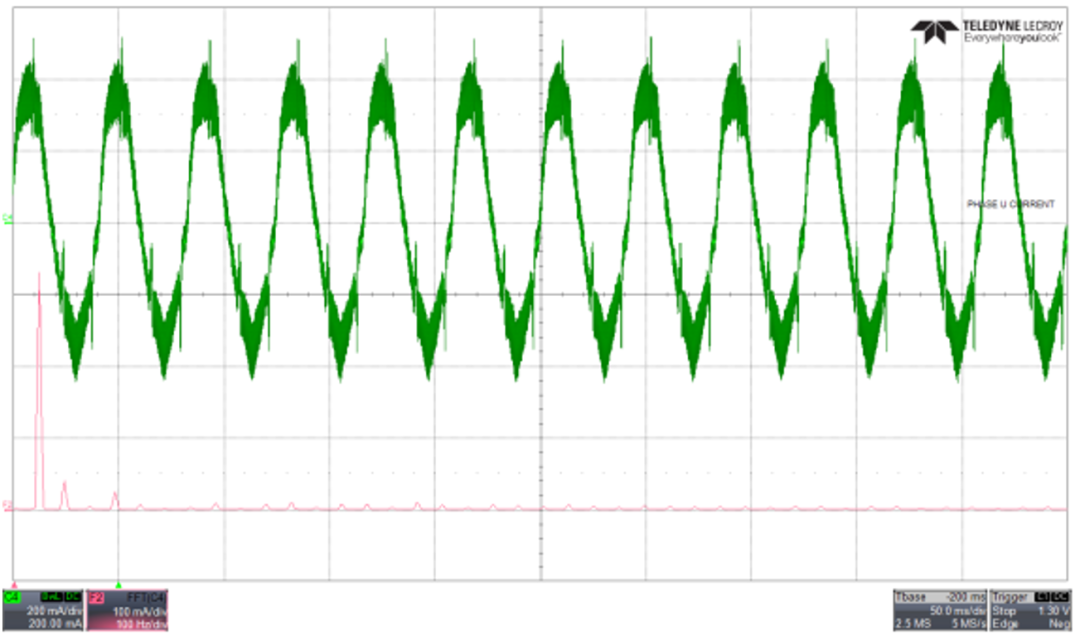
Relationship between phase current waveform and FFT continuous PWM
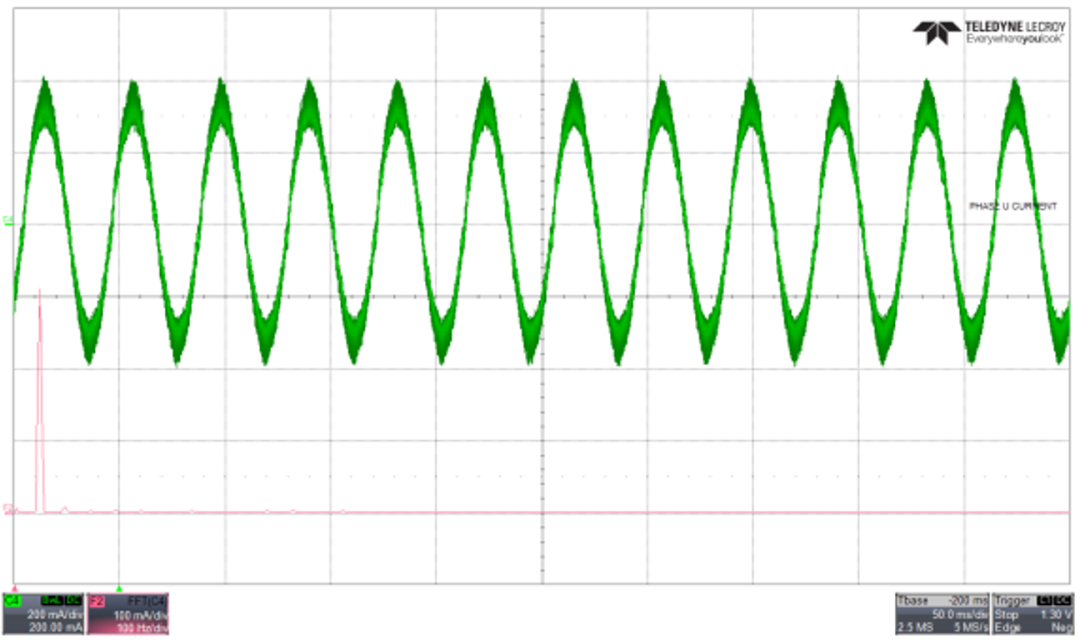
Dead time compensation
A second strategy used to reduce audible noise in motor control applications is dead-time compensation. In motor control applications, a breakdown can be avoided by inserting a dead time between the switch of the high side and the low side of the MOS field effect transistor in the half-bridge. After the dead-time is inserted, the expected voltage at the phase node will be different from the applied voltage, and the phase node voltage will introduce unnecessary distortion in the phase current, resulting in audible noise.
To manage this extra noise, engineers can use a resonant controller to integrate dead-time compensation in order to control the harmonic components of the phase current, thereby mitigating current distortion due to dead-time, as shown in the figure below.
Time compensation analysis of sensorless FOC dead zone
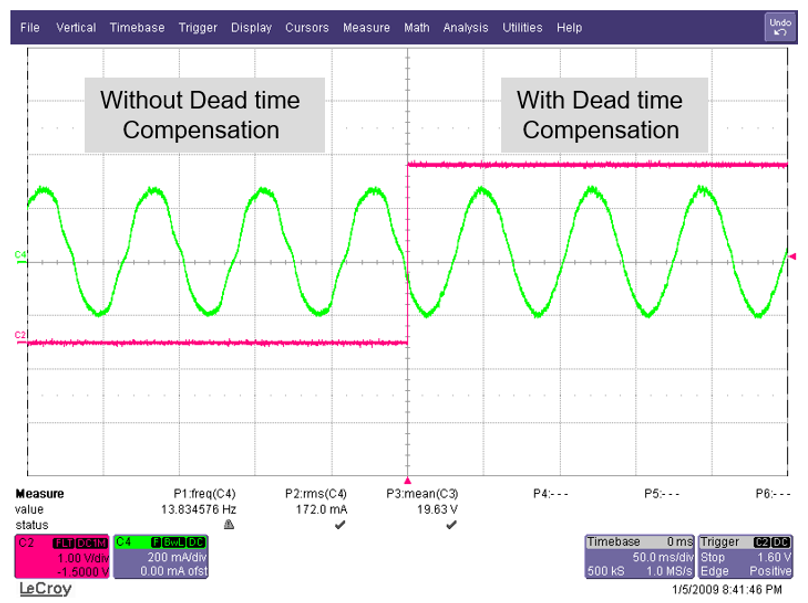
For example, TI's MCF8316A BLDC Integrated Control Grid Driver (a sensorless FOC motor driver) uses this built-in feature to optimize acoustic performance at multiple motor frequencies, as shown below.
PWM modulation and dead-time compensation are implemented to optimize the acoustic performance of MCF8316A
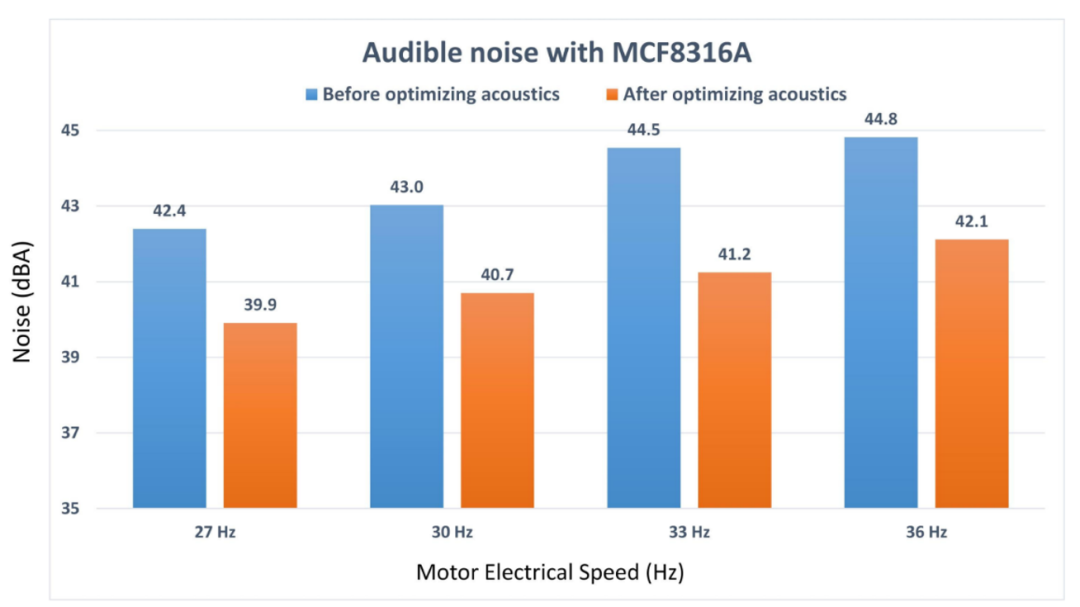
Variable reversing mode
The final strategy used to reduce audible noise in motor control applications is the variable reversing mode. In trapezoidal commutation, there are two main configurations: 120 degrees and 150 degrees. The 120-degree trapezoidal commutation may result in more acoustic noise, as longer high-impedance periods result in larger torque ripples, as shown in figures 7 and 8. The 150 degree trapezoidal commutation can only be operated at low speeds because of the short window of zero crossing detection.
To address these challenges and improve acoustic performance, engineers can build motor driver systems capable of dynamically switching between 120-degree trapezoidal and 150-degree trapezoidal commutation. This dynamic modulation improves the overall acoustic performance during BLDC motor control.
Phase current and FFT - 120 degree commutation
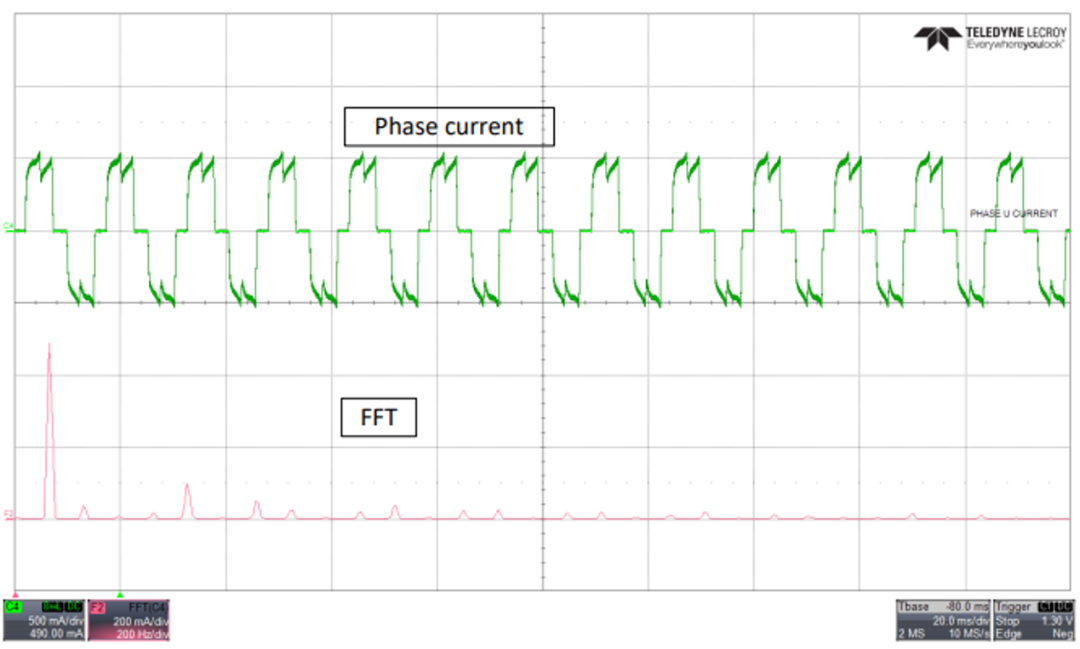
Phase current and FFT - 150 degree commutation

For example, TI Sensorless BLDC integrated trapezoidal control grid drivers (such as MCT8329 and MCT8316) employ this built-in feature to optimize acoustic performance at a variety of motor frequencies, as shown below.
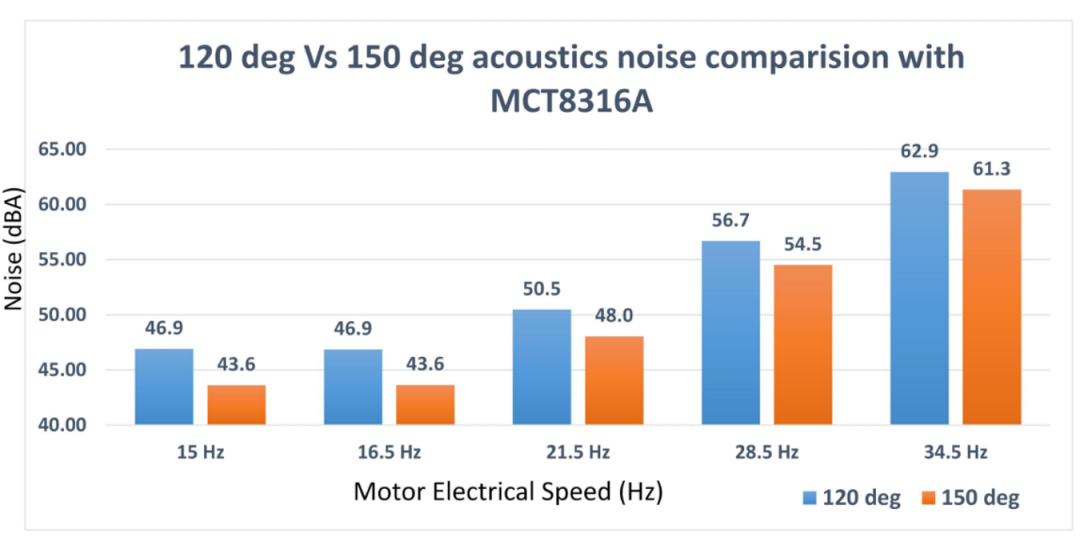
Traction inverters are the main battery drain components in electric vehicles (EVs), with power levels up to 150kW or higher. The efficiency and performance of traction inverter directly affect the driving range of electric vehicle after a single charge. Therefore, in order to build the next generation of traction inverter systems, silicon carbide (SiC) field effect transistor (FET) is widely used in the industry to achieve higher reliability, efficiency and power density.
Do you know the 8 application circuits of operational amplifiers?
This technical presentation requires an understanding of how to configure an operational amplifier in a typical gain control circuit. The applications of linear and nonlinear digital potentiometers are discussed. This article gives an overview of the basic techniques required to convert audio and other potentiometer/op amp applications from conventional mechanical potentiometers to solid state potentiometers
The current in an electronic circuit usually has to be limited. In USB ports, for example, excessive current must be prevented to provide reliable protection for the circuit. Also in the power bank, the battery must be prevented from discharging. Too high discharge current results in too large voltage drop of the battery and insufficient supply voltage of downstream devices
Using advanced real-time control technologies such as motor control circuits with higher power density, higher integration and more efficient systems, better acoustic performance of the system can be achieved
Brushless direct current (BLDC) motors have been widely used in household appliances, industrial equipment and automobiles. While brushless DC motors offer a more reliable and maintainable alternative to traditional brushless motors, they require more sophisticated electronics to drive them
How to achieve precise motion control in industrial actuators
The NCP51820 is a 650 V, high-speed, half-bridge driver capable of driving gallium nitride (" GaN ") power switches at dV/dt rates up to 200 V/ns. The full performance advantages of high voltage, high frequency and fast dV/dt edge rate switches can only be realized if the printed circuit board (PCB) can be properly designed to support this power switch. This paper will briefly introduce NCP51820 and the key points of PCB design of high performance GaN half bridge grid driver circuit using NCP51820